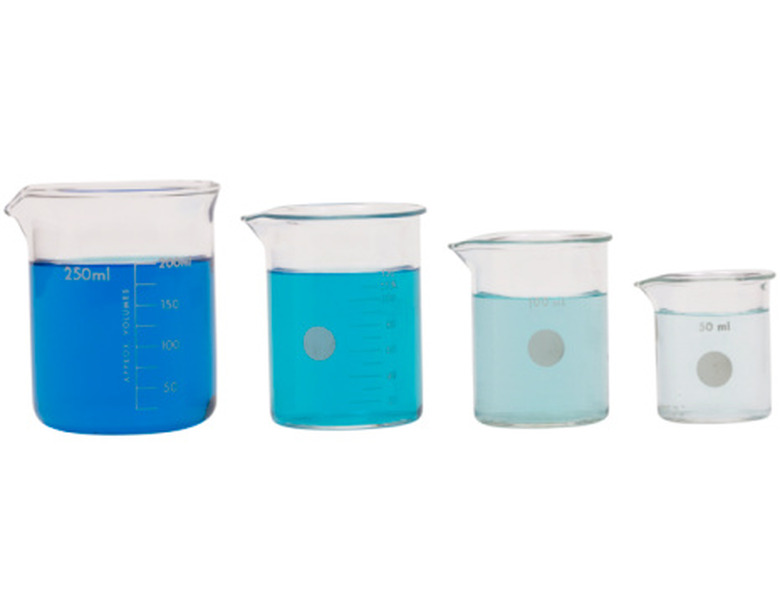How To Convert PPM To MCG
Scientists commonly use units of parts per million (ppm) to describe the concentration of chemicals in solutions. A concentration of 1 ppm means there is one "part" of chemical in 1 million equivalent parts of the solution. Since there are 1 million milligrams (mg) in a kilogram (kg), the ratio of mg chemical/kg solution is equal to ppm. In a diluted water solution, a volume of one liter (L) weighs almost exactly one kg, so ppm is also equal to mg/L. You can use these relationships to find the micrograms (mcg) of chemicals in a given volume of solution that has a known ppm concentration.
Step 1
Enter the chemical solution concentration, in units of ppm, into the calculator. For example, if you had a solution with a concentration of 500 ppm sucrose, you would enter 500.
Step 2
Multiply the value you just entered by the volume of solution you have, in units of liters (L). The result of this calculation is the mass, in units of milligrams (mg), of the chemical in the solution. If you had 0.20 L of the sucrose solution in the example, the calculation would be 500 x 0.20 = 100 mg sucrose.
Step 3
Multiply the result of the previous calculation by 1,000. This will change the units of the chemical mass into micrograms (mcg), since there are 1,000 mcg in a mg. For the sucrose solution, the calculation would give 100 x 1,000 = 100,000 mcg sucrose.
TL;DR (Too Long; Didn't Read)
Micrograms are also commonly abbreviated using the Greek letter "mu" as µg.
Cite This Article
MLA
Judge, Michael. "How To Convert PPM To MCG" sciencing.com, https://www.sciencing.com/convert-ppm-mcg-8562574/. 24 April 2017.
APA
Judge, Michael. (2017, April 24). How To Convert PPM To MCG. sciencing.com. Retrieved from https://www.sciencing.com/convert-ppm-mcg-8562574/
Chicago
Judge, Michael. How To Convert PPM To MCG last modified March 24, 2022. https://www.sciencing.com/convert-ppm-mcg-8562574/
